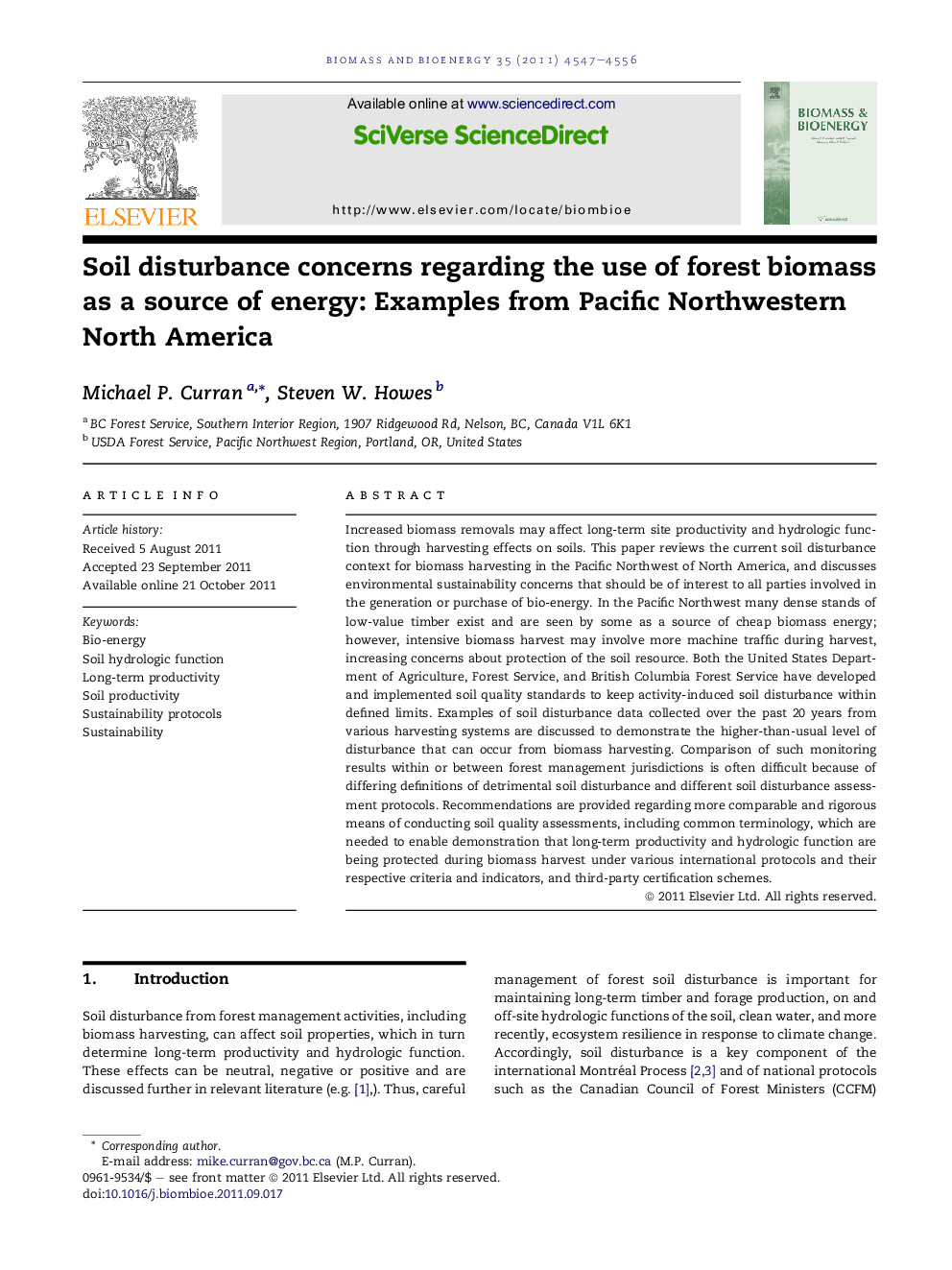| Article ID | Journal | Published Year | Pages | File Type |
|---|---|---|---|---|
| 677790 | Biomass and Bioenergy | 2011 | 10 Pages |
Abstract
Increased biomass removals may affect long-term site productivity and hydrologic function through harvesting effects on soils. This paper reviews the current soil disturbance context for biomass harvesting in the Pacific Northwest of North America, and discusses environmental sustainability concerns that should be of interest to all parties involved in the generation or purchase of bio-energy. In the Pacific Northwest many dense stands of low-value timber exist and are seen by some as a source of cheap biomass energy; however, intensive biomass harvest may involve more machine traffic during harvest, increasing concerns about protection of the soil resource. Both the United States Department of Agriculture, Forest Service, and British Columbia Forest Service have developed and implemented soil quality standards to keep activity-induced soil disturbance within defined limits. Examples of soil disturbance data collected over the past 20 years from various harvesting systems are discussed to demonstrate the higher-than-usual level of disturbance that can occur from biomass harvesting. Comparison of such monitoring results within or between forest management jurisdictions is often difficult because of differing definitions of detrimental soil disturbance and different soil disturbance assessment protocols. Recommendations are provided regarding more comparable and rigorous means of conducting soil quality assessments, including common terminology, which are needed to enable demonstration that long-term productivity and hydrologic function are being protected during biomass harvest under various international protocols and their respective criteria and indicators, and third-party certification schemes.
Related Topics
Physical Sciences and Engineering
Chemical Engineering
Process Chemistry and Technology
Authors
Michael P. Curran, Steven W. Howes,
